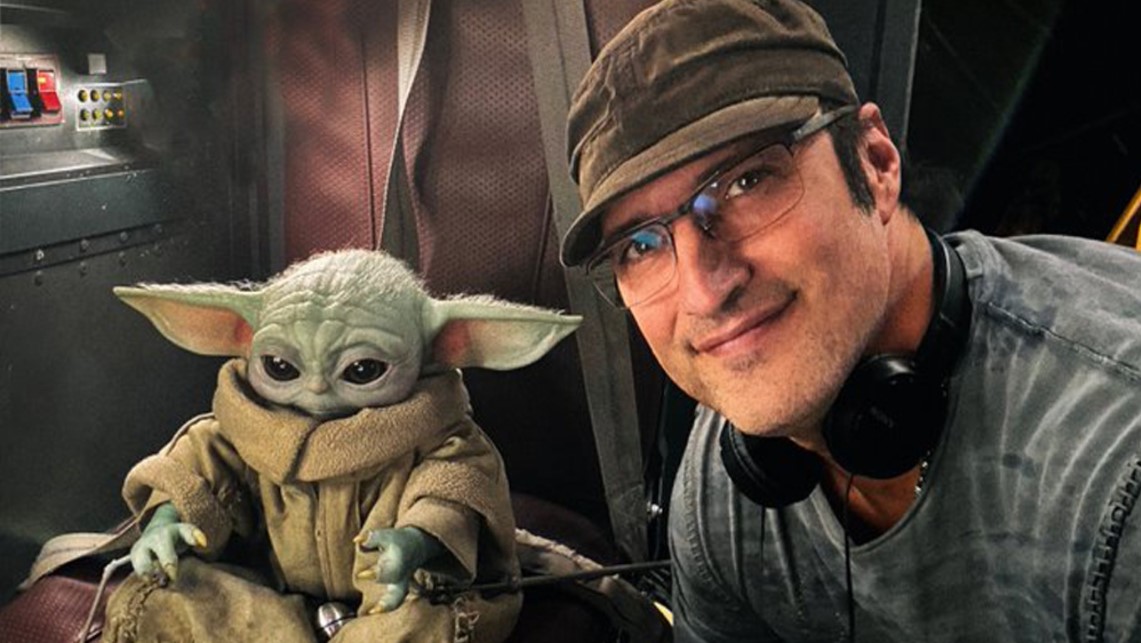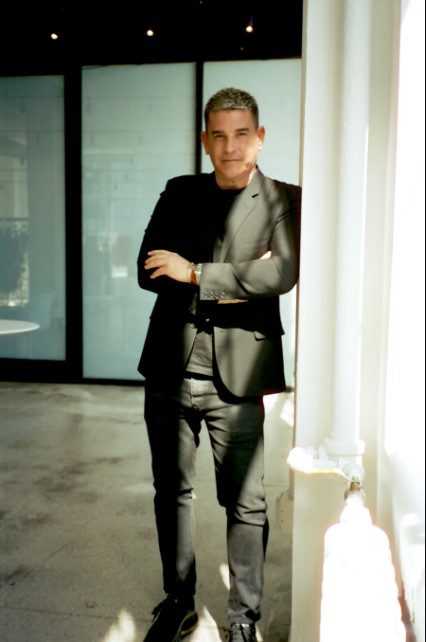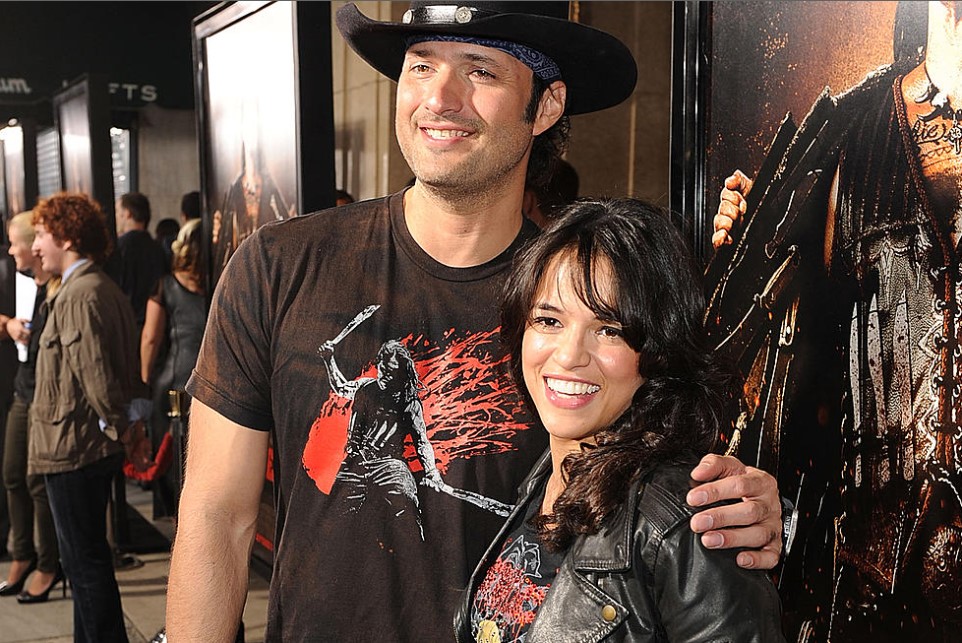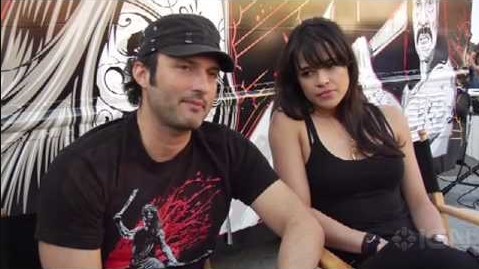Are you a follower of Robert Rodriguez? Are you searching on google for How to contact him? What is the WhatsApp number, contact number, or email id of Robert Rodriguez? What is the hometown and residence address of Robert Rodriguez? Who is the Contact Agent, Manager Robert Rodriguez? What is the Facebook, Twitter, or Instagram id of Robert Rodriguez? find out all these things in our article below.
Robert Rodriguez Wiki/Bio
He was raised by his parents, Rebecca (Villegas), a nurse, and Cecilio G. Rodrguez, a salesperson, in San Antonio, Texas, the United States. His ancestors are Mexican.
Few others, including the 12-year-old Rodriguez sitting at a crowded cinema with his pals, were as spellbound by the sights from John Carpenter’s 1981 sci-fi tale Escape from New York (1981). After seeing a movie, many people think to themselves, “I can do that.” Another student disagreed, saying: “The answer is YES, I AM GOING TO DO THAT.
I intend to pursue a career in filmmaking.” That particular day served as a springboard for his future career. Robert was up in a large household of ten children in Texas. He was the middle kid. Instead of becoming lost in the crowd like many of the other kids, Robert was always a standout as a creative and energetic young man.
In his natural state of mind, he was an artist who was rarely seen without pen and paper in hand, doodling some illustrative abstract dramatic element. It is said that his mother, who was not fond of the “dreary” films of the 1970s, instilled a love of cinema in her children by taking them to the renowned Olmos Theatre in San Antonio on a weekly basis, where they saw films by Sergio Leone and Charles Chaplin, as well as silent comedies by Buster Keaton.
The young Robert uses the family’s outdated Super-8 film camera to make his first films in a short period of time. Action, sci-fi, horror, drama, and stop-motion animation are just a few examples of possible genres. He makes do with what he has on hand, which is mostly his family: props from around the house, locations from around town, and a large cast and crew. A VCR and a video camera (as a present from the manufacturer) arrive as a homemade wonder at the end of the decade, thanks to his father, a salesperson.
He’ll be able to make movies for the rest of his life now that he has this new gear. He shows the films to his buddies, all of whom are eager to appear in the upcoming one. He becomes known as “the child who produces movies” around town. Students are permitted to submit “term movies” instead of term papers because teachers “knew I’d put more effort into a movie than I ever would into an essay,” according to the student. In “Los Hooligans,” he creates his own comic strip.
His films have won every local film competition and festival that has ever been held on the same schedule. To get into the renowned film department of UT Austin, an aspirant must first prove his academic worth by making his own film instead of applying through the traditional route. Three, to be precise: an “Austin Stories” short film trilogy featuring his siblings. It outperforms the competition and earns Robert a spot in the program. Robert spends $400 of his own money after being accepted into the film program to make his “largest” picture yet: Bedhead, a 16mm short comedy/fantasy (1991).
The short, for which he used every camera technique in the book, went on to win numerous prizes. Upon meeting and marrying fellow Austinite Elizabeth Avellan, Robert comes up with a wild plan: he will sell his body to science in order to finance his first feature-length film (a Mexican action-adventure about a guitarist with no name looking for work but getting caught up in a shoot-’em-up adventure) that he will sell to the Spanish video market and use as an entry point to a lucrative Hollywood career in Mexico El Mariachi is his “guinea pig” project, and he raises only $7,000 with it (1992).
While it may have remained obscure, the picture makes it to the Sundance Film Festival, where it becomes an instant hit, earning Robert an international distribution agreement with Columbia Pictures and making him a global film legend. It’s not like him to rest on his laurels. He directs the cable movie Roadracers in 1994 and contributes a section to the anthology comedy Four Rooms in 1995.

When he released his first “real” studio album, people began to refer to him as “John Woo from south of the border”. Desperado is remaking/following up on “Mariachi” (1995). The picture, while not a box-office smash, does respectable business and launches the American film careers of Antonio Banderas as a guitarist-turned-gunslinger and Salma Hayek as his love interest in Spain’s cinemas (the two would star in several of his movies from then on).
It also enhances the director’s image as someone who can work with limited resources to get noteworthy outcomes. Films such as Batman Forever and GoldenEye, which had budgeted for over $100 million in 1995, struggled to make a profit on less than $7 million from Robert Rodriguez’s “Desperado.” Quentin Tarantino, another rising star of the independent film scene, made a cameo appearance in the picture. It would be the start of a lengthy friendship filled with several collaborations between the two of them.
In particular, there’s Quentin Tarantino’s vampire schlockfest From Dusk Until Dawn (1996). As an instant cult classic about two criminal brothers fleeing the Texas Rangers and ending up in a vampire-infested Mexican nightclub, it launched George Clooney’s successful acting career.
His comeback to the “Dusk till Dawn” genre came with the teen sci-fi/horror film The Faculty (1998), which was written by Scream (1996) writer Kevin Williamson, after an absence of two years (which he used to spend with his family as well as explore story ideas and decline Hollywood offers).
It would go on to be Robert’s least successful film, despite having a small but dedicated fan base. Critics and moviegoers both blasted the film’s mediocre writing, odd casting, and obvious commercialization (due to a marketing deal with clothing designer Tommy Hilfiger).
 Career
Career
Four Rooms, which was partially based on a scene from Rodriguez’s own film, was his most commercially successful (and surprise) picture to date after a third three-year break (1995). Spy Kids (2001) is a film about a pair of prepubescent Latino twins who discover that their dull parents (Antonio Banderas and Carla Gugino) are actually two of the world’s greatest covert spies, after a series of harsh, adult action films. No one anticipated him to write and direct it. When the film was released, it was a huge hit with both audiences and reviewers.
Following his involvement in The Dark Knight, Robert sought out legendary comic book writer/artist and writer/artist Frank Miller, an outspoken opponent of his works being made into films. Even yet, when Rodriguez presented him with an idea to adapt Miller’s best-known work into the film Sin City, he was completely convinced and overjoyed (2005).
Filmmaker Robert Rodriguez brought together the biggest cast he had ever worked with for this collection of noir-style stories set in a fictitious crime-ridden slum Robert Miller resigned from the Director’s Guild of America after Rodriguez insisted that Miller co-direct the picture, claiming he didn’t want to merely “adapt” but “interpret” Miller’s comics.
According to many critics, Sin City was made solely to translate Frank Miller’s comics to the big screen. Working with Frank Miller as a co-director and bringing in Quentin Tarantino to film a sequence gave Rodriguez the opportunity to once again dazzle Hollywood with his skills and vision.

Rodriguez and Tarantino collaborated once more on the 2007 film Grindhouse, a two-film release (2007). Planet Terror (2007), Rodriguez’s picture, was a “hardcore, extreme, sex-fueled, action-packed” experience. Rodrigo flits back and forth between his passion project and a showy picture that makes use of all of his skills to create an exhilarating thrill ride.
Cherry (Rose McGowan) is a reluctant go-go dancer who is found wanting when she meets El Wray (Freddy Rodriguez), her ex-lover, who shows up at a neighborhood BBQ grill. The story revolves around Cherry. After that, they find themselves escaping to Mexico while avoiding brain-eating zombies due to a series of unfortunate occurrences (here we go off to Mexico again). In addition to directing, Rodriguez also does camera work, editing, and music composition for his movies’ soundtracks.
He also shoots a lot of the action sequences himself, so the director’s vision shows up in the final product. Rodriguez used a pay-per-use computer for hours of retouching on El Mariachi (1992), his first feature film. As a result, he was able to get the exact footage he was looking for.
Away from Hollywood’s film industry, Rodriguez is a talented chef who prepares delectable dishes for the show’s cast and crew. His ability to turn a low-budget film with an inexperienced team into a masterpiece is another of Rodriguez’s many accolades. “The movie made on seven grand,” El Mariachi, was one of Rodriguez’s best pictures, and it still managed to rank (receiving a rating of 92 percent on the Rotten Tomatoes film review site).

Rodrigo has such a strong hand in his films, which allows him to get exactly what he wants on the first go. Some of the themes and threads in Rodriguez’s films are similar, but they are also distinct. He shoots El Mariachi (1992) with a hand-held camera because it’s more portable. Several factors led him to this conclusion.
He didn’t use a tripod for two reasons: first, it was expensive, and second, he wanted the viewers to be more engaged in the action. In the action moments, he has more freedom of movement using a hand-held camera, which also allows for distortion of the amateurish action sequences. As a result, Rodriguez could afford to invest more on special effects in films like Sin City (2005) and Planet Terror (2007), where the budgets were considerably larger and there was no need to compensate for mistakes.

When it comes to being a filmmaker, Robert Rodriguez has rewritten the book on what is and isn’t possible. It’s a decision that might (and has) cost many directors their careers to avoid Hollywood’s obscenely expensive budgets, multi-picture deals, and the two most powerful labor unions. As a result, Rodriguez has developed some of the most inventive works to ever grace the big screen.
As soon as Robert Lucas convinced him to leave the Writers’ Guild of America, he immediately began using the creative, flexible (and affordable) digital filmmaking technology in all of his future projects, beginning with the sequel to the family-friendly hit, Spy Kids 2, Island of Lost Dreams (2002), which was THEN immediately followed by the trilogy-caper, Spy Kids 3-D: Game Over. Ultimately, this would be the most financially successful of the series, and it would make use of the long-forgotten 3-D movie gimmick with stunning results. Toward the end of the year, Rodriguez’s career came full circle as he finished “El Mariachi,” his breakthrough story. He paid respect to Sergio Leone’s westerns most directly in the last part, Once Upon a Time in Mexico (2003).
Featuring Antonio Banderas (as the gunslinging musician), Johnny Depp (as the corrupt CIA agent seeking to exploit him), Salma Hayek, Mickey Rourke, Willem Dafoe, and Eva Mendes, the film featured even more of the Mexican shoot-’em-up spectacle than the previous two combined.
Facts About Robert Rodriguez :
Birthday/Birth Date: 20 June 1968
Birth Place: San Antonio, Texas, United States
Children:
Age: 58 Years old
Official TikTok:
Occupation: Director
Height: 1.87 m
Popular Friends: NA
Business Facts:
Salary of Robert Rodriguez: NA
Net worth: NA
Total TikTok Fans/Followers: NA
Facebook Fans: 637K followers
Twitter Followers: 330.7K Followers
Total Instagram Followers: 275k
Total YouTube Followers: 23.6K subscribers
Some Important Facts About Robert Rodriguez :
1. Robert Rodriguez was born on 20 June 1968 (age 53 years), San Antonio, Texas, United States
2. His age is 53 years.
3. His birth sign is Gemini.
4. His height is 1.87 m.
5. His net worth is $60 Million.
Robert Rodriguez Fan Mail address:
Robert Rodriguez, William Morris Endeavor Entertainment,
9601 Wilshire Blvd., 3rd Floor, Beverly Hills,
CA 90210-5213, USA.
Robert Rodriguez Phone Number, Email Address, Contact Info, Texting Number, Fanmail, and More Details
| Robert Rodriguez Phone Number, Email ID, Address, Fanmail, Tiktok and More | |
|---|---|
| Email Address | NA |
| https://www.facebook.com/robertrodriguezofficial | |
| House address (residence address) | San Antonio, Texas, United States |
| https://www.instagram.com/rodriguez/ | |
| Office address | NA |
| Office Number | NA |
| Official Website | NA |
| Phone Number | (310) 285-9000. |
| Snapchat Id | NA |
| TicTok Id | NA |
| Twitch | NA |
| https://twitter.com/rodriguez | |
| Whatsapp No. | NA |
Robert Rodriguez Phone Number:
Robert Rodriguez Address: San Antonio, Texas, United States
Robert Rodriguez Phone Number: (310) 285-9000.
Robert Rodriguez Whatsapp Number: NA
Robert Rodriguez Email ID/ Email Address: NA
Robert Rodriguez Social Profiles
Robert Rodriguez Facebook Fan Page: https://www.facebook.com/robertrodriguezofficial
Robert Rodriguez Twitter Handle: https://twitter.com/rodriguez
Robert Rodriguez Instagram Profile: https://www.instagram.com/rodriguez/
Robert Rodriguez Snapchat Profile: NA
Robert Rodriguez YouTube Channel: https://www.youtube.com/channel/UCzG1tFKXaZp0QwhATJcX9Bg
Also Checkout: Robert De Niro Phone Number, Email ID, Address, Fanmail, Tiktok and More
